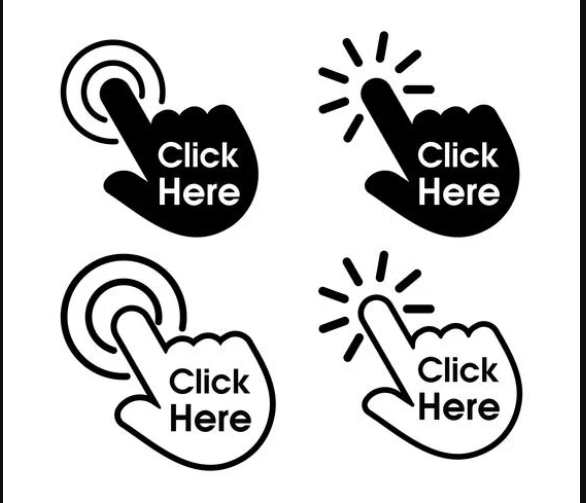
At the early stage of internet evolution, people claim that without the use of “click here”, most people would not know what to do when they came across a link. Content writers came up with it as a solution that gave users the hint of what action they were supposed to take – literally, click here.

Needless to say, that has drastically changed as more and more people have become familiar with websites in recent years. If you continue to use “click here” in your content, you can give your visitors bad impressions that you don’t want them to have, such as:
- That you don’t respect their intelligence enough to know what a link is
- That your website or the content on it hasn’t been updated in years
You always want to make a positive impression of who you are through your website, and most people nowadays think that websites that still use “click here” are just plain old-fashioned. I would venture to guess that that is definitely not the impression you want to convey about your business or organization.
Some links use the word “here” instead of “click.” The problem with using “here” in a link is that it hides what the user is clicking. The text around the link might explain what they’re clicking, but when the user reads the link itself they won’t have a clue. This means that the user has to read the text all around the link to understand the context of the link, thus impeding them from taking the quick and short route of clicking the link directly. If there’s a lot of text, this could slow the user down a lot.

Is Click here a call to action?
For the most part, we can’t be blamed for using “click here” liberally. At first glance, it seems like an unambiguous call to action, a direct request for your subscriber to perform a specific action. As marketers, we’re just asking our readers to do a good thing for our campaign’s goals
What should you say instead of click here?
Instead of saying “click here,” it’s probably better to make concrete and proper nouns in a sentence the link anchors. Concrete nouns are best in my opinion because they are more immediate and vidid and give users a better idea of what they will get when they click through.
“CLICK HERE” is Not Action-Oriented
People respond to action words, so content writers need to keep that in mind and encourage visitors to take the desired action when possible.
The phrase “click here” is restrictive because it shifts the focus to the user’s mouse. However, it ignores other means of website navigation – such as mobile screen taps, keyboard navigation, or voice recognition. Furthermore, it implies that these modes are not supported.
But just because “click here” is ubiquitous on the web, doesn’t mean it’s best way to help your readers navigate your website. Here are a few reasons to avoid it:
- SEO: Google ranks your page based in part on how relevant your content is to its topic. It’s better to have a page of descriptive text than a page of click heres
- Accessibility: the word “click” literally does not compute with screen readers and other assistive technologies; your visitors who use these devices need a clear understanding of where that link goes
- Action items FTW: You want your website visitors to read more, or watch a video, or follow you on Twitter, etc. You don’t want them to “click” (or “tap” on mobile).
- Mystery navigation: Especially when you use multiples (“Click here, here and here to read more”), your user doesn’t know what they are clicking on before they click on it
- Respect your audience: It’s been a couple of decades; people know that the blue underlined words are links to another site. No need to spell it out for them!

Leave a Reply